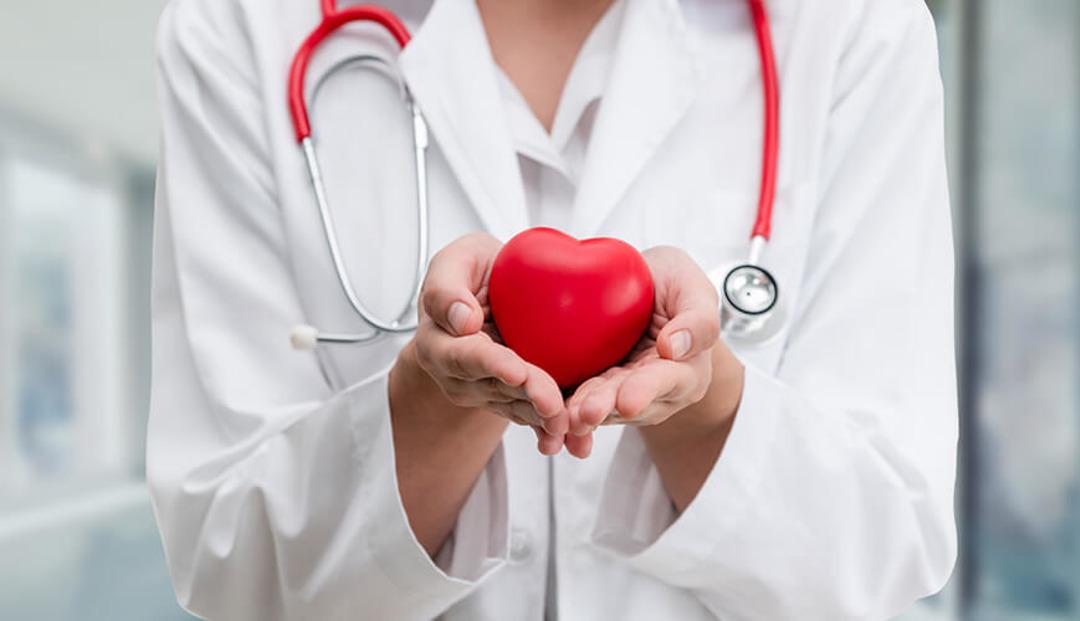Specialist from the Department of Cardiology. Nuri Cömert gave information about arrhythmias and their treatment. Arrhythmias are generally defined as irregular or different heartbeats, and states that they generally occur in disorders of the electrical conduction system that ensures a normal heartbeat. Cömert said, “The heart may beat too fast or too slow, or heartbeats may be irregular. Arrhythmia can be felt as different beats, fast beats, slow beats. Generally, most arrhythmias are harmless, but some can cause life-threatening conditions. “For this reason, it is important for those who think that there are differences in their heartbeat that affect their lifestyle, to consult a specialist without wasting time.”
“STRESS CAN CAUSE ARRHYTHMIA”
Pointing out that stress is one of the factors causing arrhythmia, Cömert continued his speech as follows:
“In healthy adults, the heart beats 60-100 times per minute and these beats occur in a certain order. When a person normally feels their own heartbeat in a disturbing way, it is called “arrhythmia”. For example, we normally notice an increase in our heartbeat when we are running, climbing stairs, when we are excited or under emotional stress. However, if a person feels a difference in their heartbeat for no reason, this may mean that there is a rhythm disorder in the heart.”
“FACTORS CAUSING ARRHYTHMIA”

Exp. Dr. Generous, coronary artery disease, heart valve diseases, after previous cardiovascular or valve operations, high blood pressure, congenital heart diseases (heart holes, valve problems), thyroid gland diseases, obstructive sleep apnea, kidney dysfunction (electrolyte imbalance), some medications and listed supplements, caffeine, nicotine or drug-like substance consumption as factors that cause arrhythmia.
Cömert said, “Inappropriate stimulation foci that cause arrhythmia can be eliminated by applying “radiofrequency ablation” and continued as follows:
“Slowdowns in the heart may indicate a block in the conduction system, and while this is often treated with medication and follow-up depending on the level of the block, permanent pacemaker treatment can be applied in severe heart blocks. In case the heart rhythm suddenly accelerates abnormally and the person faints, the inappropriate stimulation foci that cause arrhythmia can be eliminated by applying “radiofrequency ablation”. Arrhythmias may sometimes not cause any symptoms. Irregular heartbeats can also be detected incidentally in people who go for examination for other reasons:
SYMPTOMS

Talking about the symptoms of arrhythmia, Cömert said, “There may be a feeling of different beats, fast heartbeat (Tachycardia), slow heartbeat (Bradycardia), chest pain, shortness of breath. It may also be accompanied by symptoms of anxiety, feeling extremely tired, feeling dizzy or lightheaded, sweating, fainting and fainting.
As soon as the person feels such changes in his heart, he should immediately go to the nearest health institution and have a heart electrocardiogram (ECG). In this way, the type of arrhythmia can be determined with the ECG taken at the time of palpitation and the most appropriate treatment method can be selected. However, if an ECG could not be taken during palpitations, arrhythmia investigation is performed with a rhythm holter examination, which records the heart rhythm over a certain period of time.”
Cömert also pointed out that some medications used in the treatment of asthma and colds, excessive tea and coffee consumption and stress may have a triggering effect on individuals who are prone to arrhythmia, and said, “People with a history of sudden death in their family should be screened for arrhythmia. “Arrhythmias accompanied by advanced heart failure and cardiovascular diseases can lead to more serious consequences,” he said.
“YOU CAN GET RID OF ARRHYTHMIA WITH DIFFERENT TREATMENT OPTIONS”

Finally, Cömert said about arrhythmia treatment: “Depending on the severity of the rhythm problem, it includes treatment methods such as medication, pacemaker implantation or ablation. The goal of treatment is to improve the quality of life and eliminate vital risks. A heart-healthy lifestyle, diet and regular walks can be useful in preventing causes that may trigger arrhythmias. Arrhythmias that are not successful with drug treatment and can generally originate from the atria and ventricles of the heart can be eliminated by radiofrequency method, by freezing or burning the focus that causes the arrhythmia. The success rate of this method varies from 70 percent to 99 percent depending on the type of rhythm problem. In summary, arrhythmias can be detected and treated successfully with a correct and integrative approach.”
(UAV)
